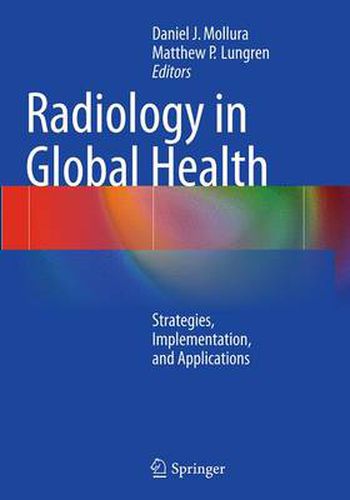Readings Newsletter
Become a Readings Member to make your shopping experience even easier.
Sign in or sign up for free!
You’re not far away from qualifying for FREE standard shipping within Australia
You’ve qualified for FREE standard shipping within Australia
The cart is loading…






This title is printed to order. This book may have been self-published. If so, we cannot guarantee the quality of the content. In the main most books will have gone through the editing process however some may not. We therefore suggest that you be aware of this before ordering this book. If in doubt check either the author or publisher’s details as we are unable to accept any returns unless they are faulty. Please contact us if you have any questions.
The World Health Organization stated that approximately two-thirds of the world’s population lacks adequate access to medical imaging. The scarcity of imaging services in developing regions contributes to a widening disparity of health care and limits global public health programs that require imaging. Radiology is an important component of many global health programs, including those that address tuberculosis, AIDS-related disease, trauma, occupational and environmental exposures, breast cancer screening, and maternal-infant health care. There is a growing need for medical imaging in global health efforts and humanitarian outreach, particularly as an increasing number of academic, government, and non-governmental organizations expand delivery of health care to disadvantaged people worldwide. To systematically deploy clinical imaging services to low-resource settings requires contributions from a variety of disciplines such as clinical radiology, epidemiology, public health, finance, radiation physics, information technology, engineering, and others. This book will review critical concepts for those interested in managing, establishing, or participating in a medical imaging program for resource-limited environments and diverse cross-cultural contexts undergoing imaging technology adaptation.
$9.00 standard shipping within Australia
FREE standard shipping within Australia for orders over $100.00
Express & International shipping calculated at checkout
This title is printed to order. This book may have been self-published. If so, we cannot guarantee the quality of the content. In the main most books will have gone through the editing process however some may not. We therefore suggest that you be aware of this before ordering this book. If in doubt check either the author or publisher’s details as we are unable to accept any returns unless they are faulty. Please contact us if you have any questions.
The World Health Organization stated that approximately two-thirds of the world’s population lacks adequate access to medical imaging. The scarcity of imaging services in developing regions contributes to a widening disparity of health care and limits global public health programs that require imaging. Radiology is an important component of many global health programs, including those that address tuberculosis, AIDS-related disease, trauma, occupational and environmental exposures, breast cancer screening, and maternal-infant health care. There is a growing need for medical imaging in global health efforts and humanitarian outreach, particularly as an increasing number of academic, government, and non-governmental organizations expand delivery of health care to disadvantaged people worldwide. To systematically deploy clinical imaging services to low-resource settings requires contributions from a variety of disciplines such as clinical radiology, epidemiology, public health, finance, radiation physics, information technology, engineering, and others. This book will review critical concepts for those interested in managing, establishing, or participating in a medical imaging program for resource-limited environments and diverse cross-cultural contexts undergoing imaging technology adaptation.